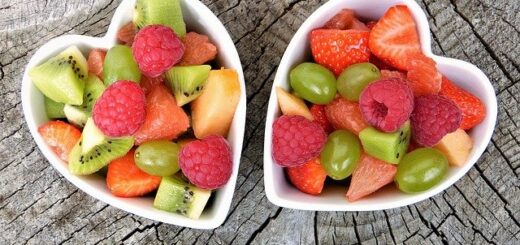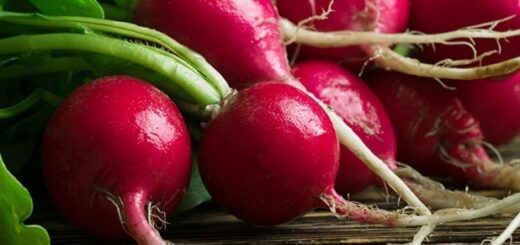Dried Legumes: Types, Nutritional Values and List of Dry Legumes

We are a bit of a reproach to those who say that they do not like dried legumes that fill your stomach like a wolf with its delicious taste, even if you are on a diet. What do you mean I don’t like? Dry beans too? What about kidney beans? Meaty chickpeas too? Don’t upset us. Get closer to the screen. Soon, these places will be filled with delicious recipes.
How did the concept of legumes enter our culinary culture? In fact, our favorite kidney beans, chickpeas, and dry beans are the maturing seed parts of plants. You do not even know that you are making delicious meals from seeds.
How he conquers the closets when they take order like soldiers in the storage container! Storage containers are taken with care. You should also pay attention to the shaped and ostentatious lids, it does not go unnoticed. Once they take their place in the cupboard regularly, the rest is up to the kitchen chefs. An evening of lentil soup, never without lemon! One evening, chickpeas with meat and pickles, don’t miss that table! Another evening, beans with meat are amazing with rice!
Let’s see what dried legumes are, let’s check our memory. Check the cabinets, if they are missing, go to the market immediately!
What Are Dried Legumes? Dry Legumes List
Let’s check the memories. What are the names of dried legumes we know. If there is a place where you get stuck, you can immediately copy from your pulses shelf. Here is the list of legumes that decorate the market shelves and make your meals delicious :
- Chickpeas
- Beans
- Red lentil
- broad beans
- Peas
- Kidney bean
- Kidney bean
- Soybean
- Green Lentils
- Yellow Lentils
- sweetcorn
What Are the Types of Dried Legumes?
Chickpeas
- It is a type of legumes that can be used in every meal, popular with roasted chickpeas in Çorum and hummus in Arabic cuisine.
- It is mostly grown in Central Anatolia and Southeast in our country.
- Chickpea, which is consumed deliciously in Turkish cuisine, is prepared with or without meat.
- Especially, chickpea in casserole dishes is one of the indispensable recipes of restaurants.
broad beans
- It is a species that gives its name to legumes. It is a high protein source that is used in every meal, especially in Central Anatolia, that flavors stuffed meats.
- The broad bean, which is definitely used for fava appetizer, draws attention with its nutritional value.
- Beans have a very special place in vegan nutrition.
- It is a complete protein store.
Kidney bean
- It is a type of legume that grows in spring and summer and becomes healthier when consumed fresh in the season.
- Kidney beans are one of the favorites of those who feed mainly on pulses.
- To have a healthy body, you can consume kidney beans in food and salad.
Lentil
- It is a type of pulses that is open to production in every region of our beautiful country.
- There are varieties of red, green, yellow and black lentils.
- It is a high protein source.
- Lentils, which help to eliminate iron deficiency, are often used in salads and appetizers.
- It is one of the most consumed legumes in our country.
Peas
- It is a species rich in protein, starch, phosphorus and B vitamins.
- It becomes healthier when cooked with meat.
- Peas, a source of folic acid, are available in canned and fresh form.
- Those who can afford buy fresh peas and store them in the freezer.
- Thanks to its fibrous structure, it strengthens your intestines.
Kidney bean
- It is a source of protein and starch consumed both fresh and dry.
- Cowpea, which is preferred in salads and meals, is a strong protein source.
Beans
- It is a very diverse legume.
- Our country is almost represented by dry beans.
- It is also consumed in the form of sausage, meat and pastrami with the difference of local tastes.
- Dry beans are used not only in meals, but also in appetizers and piyaz.
- It is one of the legumes consumed hot and cold.
- It is a legume that is used in many products and has become more popular and popular recently. It is widely used in cakes, breads, pastry foods.
- Soybean, which is very effective in diet nutrition, is remembered as an indispensable legume of hearty meals.
What are the Nutritional Values of Dried Legumes?
- Dried legumes are the healthiest vegetable sourced protein store. Since each of them is beneficial and health-friendly, it is beneficial to use it in every meal, even if it is a little bit.
- It has almost no cholesterol content.
- You can get your potassium needs and fiber needs from dried legumes. And with peace of mind.
- Moreover, legumes in the diet will also meet your protein needs.
- Adding meat to the dish while cooking increases the protein content even more. This situation; it will keep you fresh for a long time.
- When consumed with vitamin C, the use of iron in the body increases. You can take advantage of this healthy trick by squeezing a few drops of lemon into your meals.
- You should add legumes with high nutritional value to your meals regularly. You will need many legumes for better functioning of body functions.
- Legumes, which are effective from child nutrition to pregnancy nutrition, will nourish and keep you alive with natural methods.
- Especially if you consume legumes with high nutritional value, you will increase your body resistance. Many legumes containing Vitamin B, Vitamin C and Iron will keep you away from winter infections.
- Those who consume food prepared with legumes, regardless of summer and winter, lead a healthier life than those who do not. They also stay away from obesity as it is a satisfying food type.
- You can add legumes to many recipes from salads to main courses and consume them deliciously.
How to Store Dried Legumes?
- For long-lasting legumes, you must store your products in a humidity-free environment.
- For storage, you can choose a securely closed storage jar or fabric sack.
- We recommend adding a pinch of salt when storing. A pinch of salt that you have thrown will prevent moisture and insects.
- It will be a healthier process to air the legumes that have been waiting for a very long time on a table from time to time.
- You can store your legumes such as chickpeas and beans in the deep freezer, or boil them for a while if you want, and store them in deep freezer bags.
- When you use it later in meals, you will both reduce the cooking time a little more and save time.
- There is a detail you need to pay attention to, you should not mix the legumes out of the deep freezer while cooking. Otherwise, there is a possibility of crushing.











